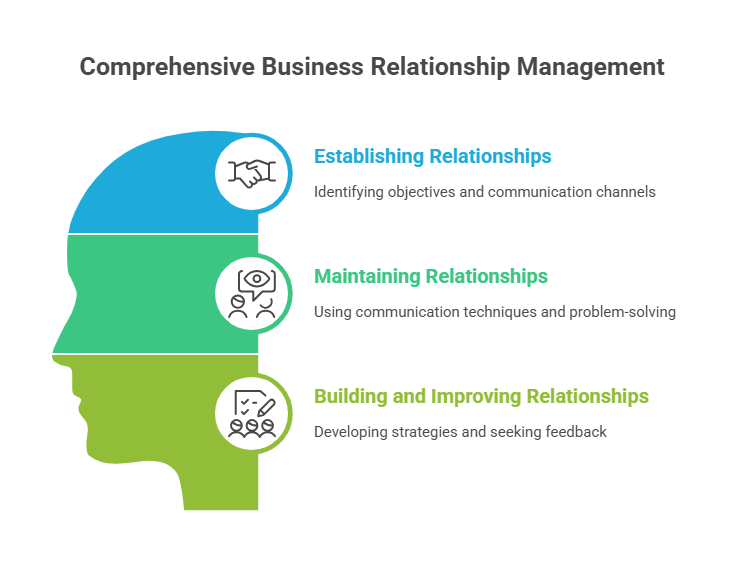Relevant Networks When Building and Maintaining Business Relationships
Posted by SkillMaker in Oct, 2025
What is a concise description of relevant networks when building and maintaining business relationships?

Relevant networks in the context of building and maintaining business relationships refer to the strategic connections and associations one forms within their industry or business sphere. These networks are pivotal for sharing knowledge, gaining industry insights, and opening avenues to mutual opportunities for growth and collaboration.
Listen to this article as a podcast
Why do people in the Public sector industry need relevant networks when building and maintaining business relationships?
The Public sector relies heavily on effective communication and collaboration between different entities and stakeholders. Establishing relevant networks facilitates the flow of information, resource sharing, and partnership opportunities, which are crucial for policy development, service delivery, and implementing large-scale programs with efficiency and community impact.
“Strong networks are the foundation of successful business relationships, enabling a synergy that fuels growth and innovation.”
What are the key components or elements of relevant networks in building and maintaining business relationships?
Key components include:
- Trust and Credibility: Establishing a reputation for reliability and integrity.
- Mutual Benefit: Engaging in reciprocal relationships that add value for all parties involved.
- Diverse Connections: Building a network that includes varied expertise and perspectives.
- Active Engagement: Regularly participating in network activities and maintaining communication.
- Continuous Learning: Sharing knowledge and staying informed about industry trends.
What key terms, with descriptions, relate to relevant networks in business relationship contexts?

Registered Trademark“®”
- Networking Events: Organized gatherings for meeting potential business partners or clients.
- Collaborative Platforms: Online or offline spaces where professionals can share ideas and resources.
- Industry Associations: Groups formed around specific industries for advocacy, knowledge sharing, and networking.
- Inter-organizational Alliances: Partnerships between different organizations to achieve common goals.
- Social Capital: The influential relationships and networks that facilitate cooperation and success in business.
Who is typically engaged with operating or implementing relevant networks in business environments?
Business development managers, marketing and sales teams, government officials, industry experts, and professionals in leadership roles are typically involved in operating or implementing business networks. These individuals leverage their skills and connections to foster and sustain productive professional relationships.
How do relevant networks in business align or integrate with other components of the Public sector industry in Australia?

Relevant networks within the business realm complement other components of the Public sector by integrating communication channels and facilitating collaboration. Such networks enhance policy coordination, resource mobilization, and can lead to partnerships that deliver improved community services and legislative outcomes. They support the government’s efforts to be transparent, effective, and community-focused.
Where can the student go to find out more information about relevant networks in building business relationships?
What job roles would be knowledgeable about relevant networks in business relationships?
Roles include:
- Business Development Managers
- Sales Representatives
- Marketing Coordinators
- Public Relations Officers
- Government Liaison Officers
What are relevant networks like in relation to sports, family, or schools?

Similar to sports teams working together to achieve victories, relevant networks in business require coordination, team spirit, and strategic planning. In a family setting, it reflects the support system where members contribute to each other’s well-being and growth. In educational institutions, it resembles the collaborative relationships between teachers, students, and parents working towards enriching the learning environment. All these scenarios emphasize the importance of collaboration, communication, and shared objectives.
(The first edition of this post was generated by AI to provide affordable education and insights to a learner-hungry world. The author will edit, endorse, and update it with additional rich learning content.)
(Skillmaker – 2025)

 Post Tagged with
Post Tagged with